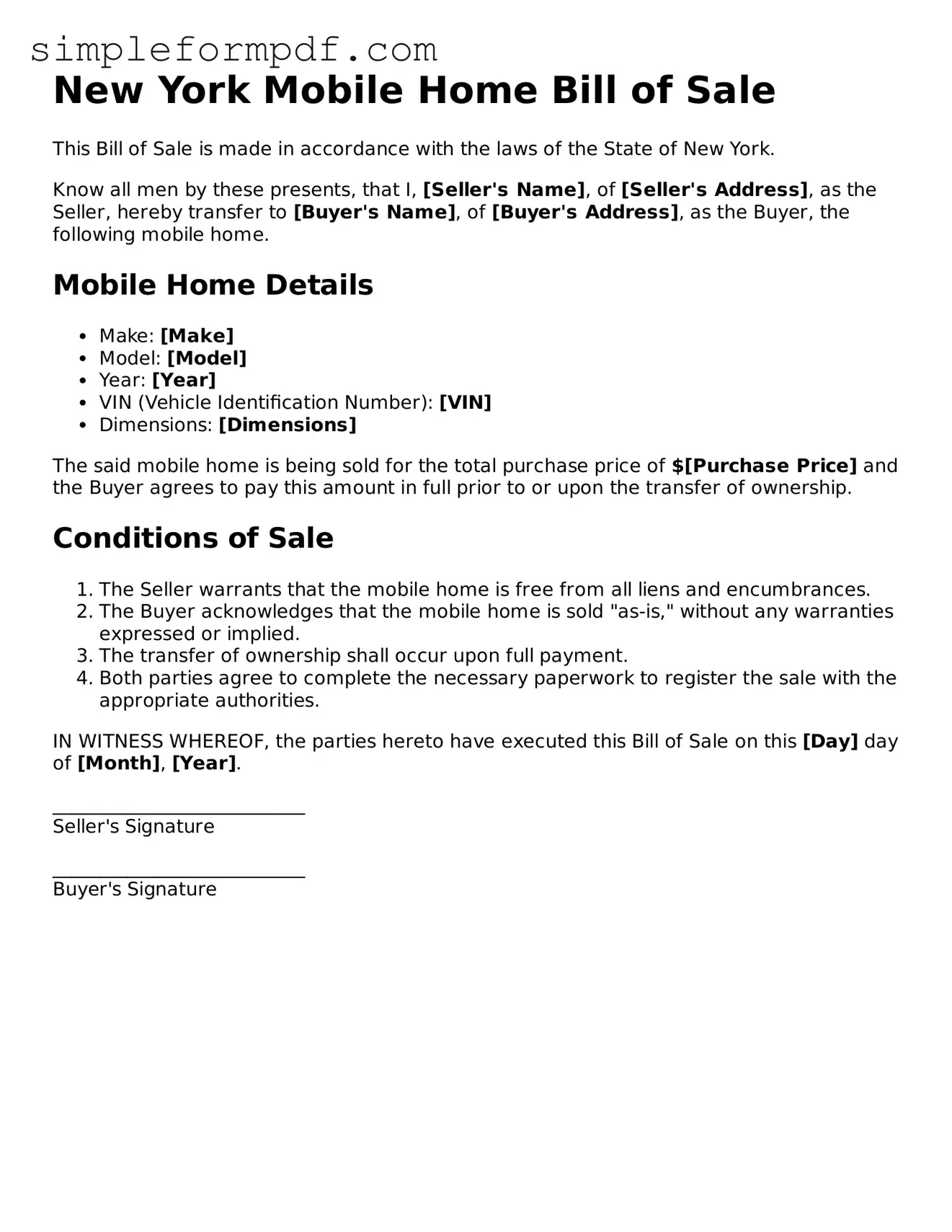New York Mobile Home Bill of Sale
This Bill of Sale is made in accordance with the laws of the State of New York.
Know all men by these presents, that I, [Seller's Name], of [Seller's Address], as the Seller, hereby transfer to [Buyer's Name], of [Buyer's Address], as the Buyer, the following mobile home.
Mobile Home Details
- Make: [Make]
- Model: [Model]
- Year: [Year]
- VIN (Vehicle Identification Number): [VIN]
- Dimensions: [Dimensions]
The said mobile home is being sold for the total purchase price of $[Purchase Price] and the Buyer agrees to pay this amount in full prior to or upon the transfer of ownership.
Conditions of Sale
- The Seller warrants that the mobile home is free from all liens and encumbrances.
- The Buyer acknowledges that the mobile home is sold "as-is," without any warranties expressed or implied.
- The transfer of ownership shall occur upon full payment.
- Both parties agree to complete the necessary paperwork to register the sale with the appropriate authorities.
IN WITNESS WHEREOF, the parties hereto have executed this Bill of Sale on this [Day] day of [Month], [Year].
___________________________
Seller's Signature
___________________________
Buyer's Signature
